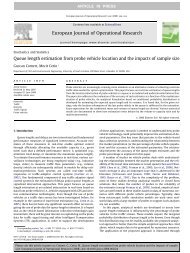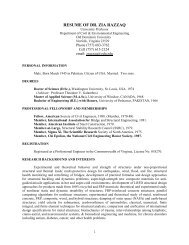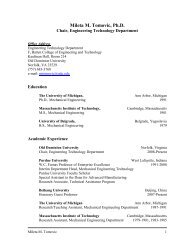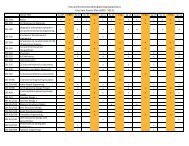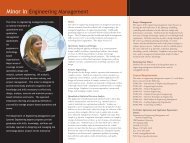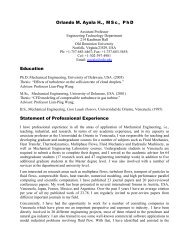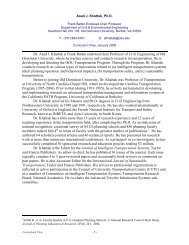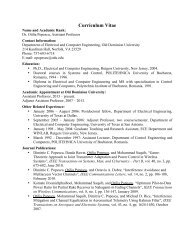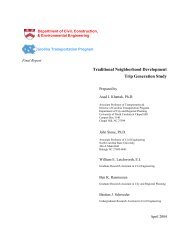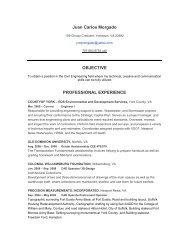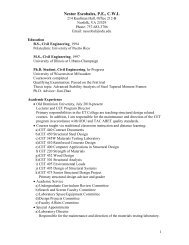storm water management model, version 4: user's manual
storm water management model, version 4: user's manual
storm water management model, version 4: user's manual
You also want an ePaper? Increase the reach of your titles
YUMPU automatically turns print PDFs into web optimized ePapers that Google loves.
Section 1IntroductionUrban Runoff AnalysisUrban runoff quantity and quality constitute problems of both a historical and current nature.Cities have long assumed the responsibility of control of <strong>storm</strong><strong>water</strong> flooding and treatment of pointsources (e.g., municipal sewage) of waste<strong>water</strong>. Within the past two decades, the severe pollutionpotential of urban non-point sources, principally combined sewer overflows and <strong>storm</strong><strong>water</strong>discharges, has been recognized, both through field observation and federal legislation. The adventof modern, high speed computers has led to the development of new, complex, sophisticated toolsfor analysis of both quantity and non-point pollution problems. The EPA Storm Water ManagementModel, SWMM, developed in 1969-71, was one of the first of such <strong>model</strong>s, it has been continuallymaintained and updated, and is perhaps the best known and most widely used of the available urbanrunoff quantity/quality <strong>model</strong>s.Many of the changes that have occurred to SWMM during the past 15 years have been poorlydocumented and were not readily visible to users. This volume includes documentation (of both thetheory and programming details) of major changes to the <strong>model</strong> since its original development. Thisdocumentation is located primarily in the appendices whereas the text consists primarily of theUser’s Manual. Theory that underlies unchanged parts of the <strong>model</strong> may still be reviewed in theoriginal documentation (Metcalf and Eddy et al., 1971a, 1971b, 1971c, 1971d) plus intermediatereports (Huber et al., 1975; Heaney et al., 1975). This volume supersedes Version 3 documentation(Huber et al., 1981b) and includes essentially all material from that <strong>manual</strong>.Urban Runoff ModelsObjectivesModels are generally used for studies of quantity and quality problems associated with urbanrunoff in which four broad objectives may be identified: screening, planning, design and operation.Each objective typically produces <strong>model</strong>s with somewhat different characteristics, and the different<strong>model</strong>s overlap to some degree.Screening ModelsScreening <strong>model</strong>s are preliminary, “first-cut” (“Level I”), desktop procedures that require nocomputer. They are intended to provide a first estimate of the magnitude of urban runoff quantityand quality problems, prior to an investment of time and resources into more complex computerbased <strong>model</strong>s. Only after the screening <strong>model</strong> indicates its necessity should one of the latter <strong>model</strong>sbe used. Examples of screening <strong>model</strong>s include SWMM Level I procedures (Heaney et al., 1976;1



